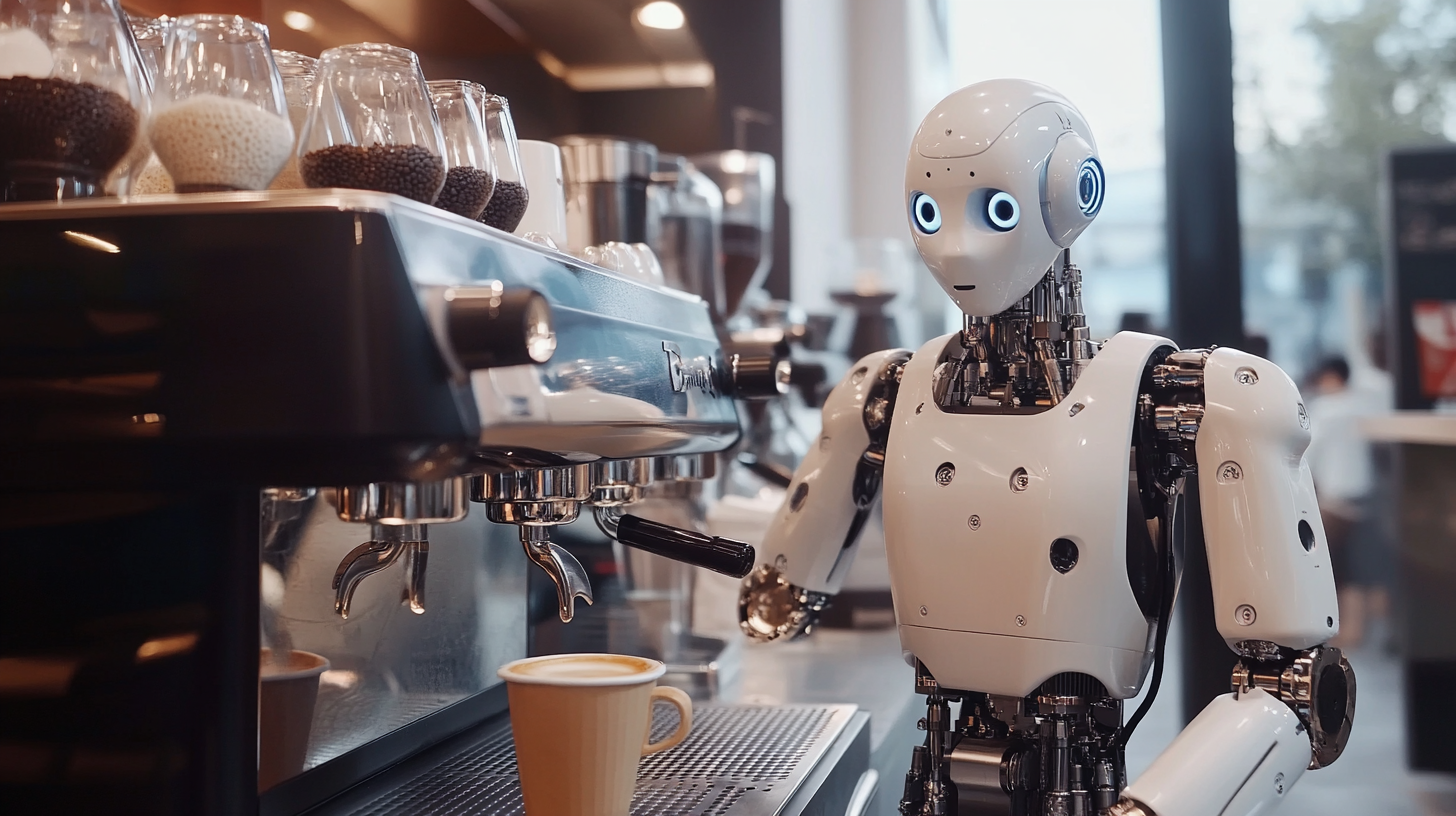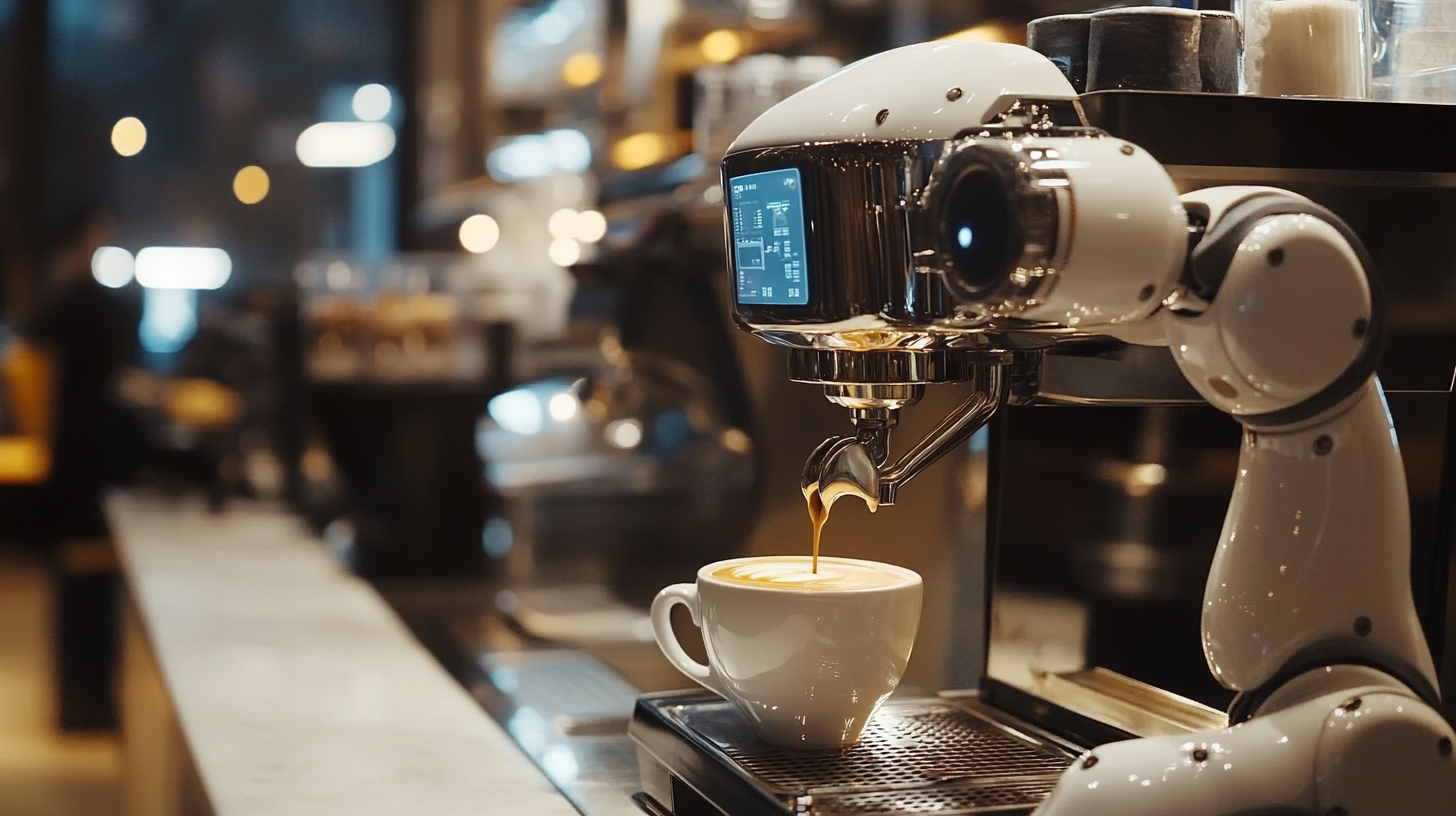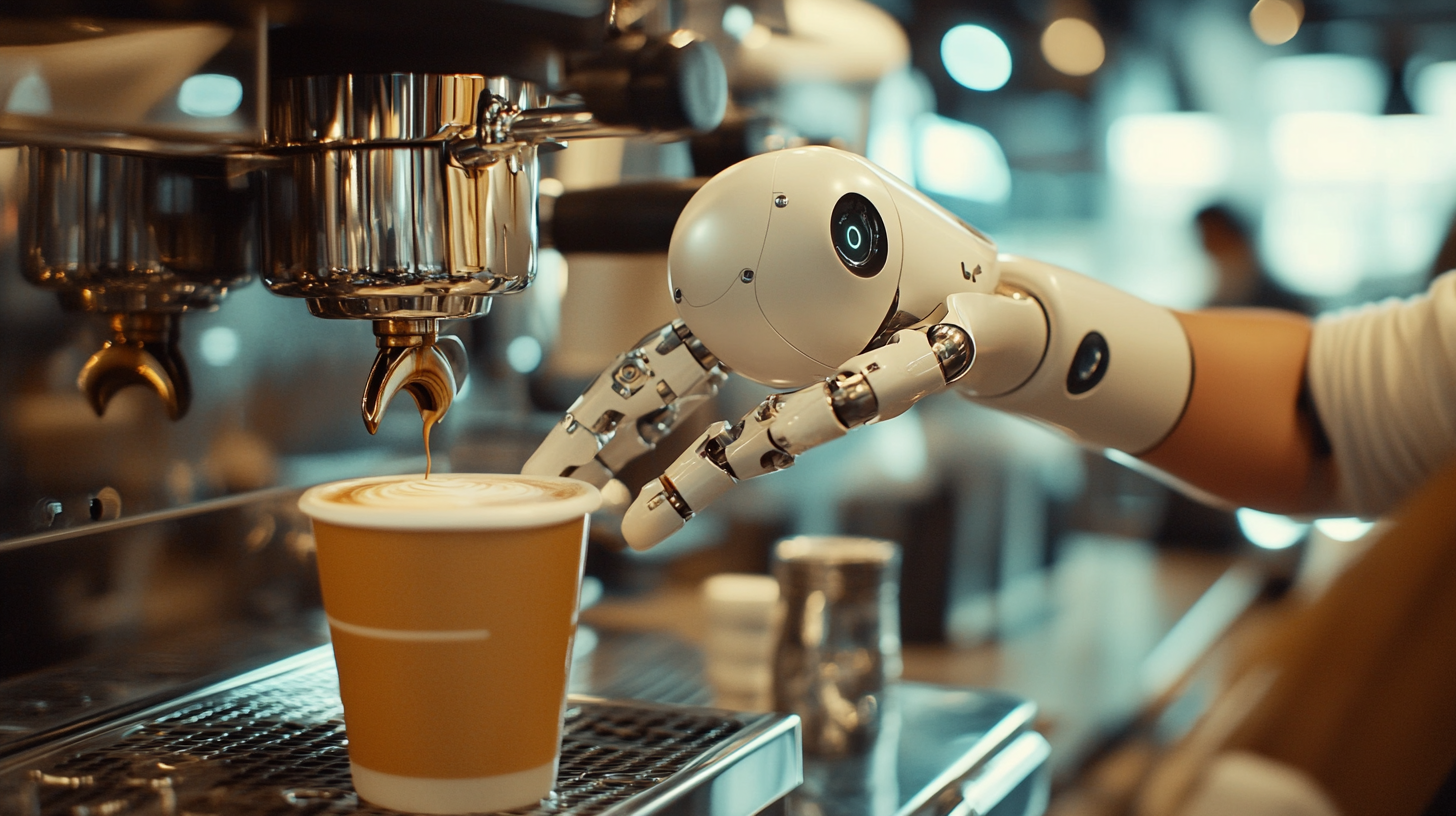Transforming Coffee Culture: The Future of Robot Baristas in Global Cafés
The coffee sector is in the midst of rapid metamorphosis, further spurred by technological progress and shifting consumer preferences. With the world café market projected to exceed US$1 trillion by 2025, the calls for high-tech means to improve the customer experience are increasing in intensity. One of the most fascinating novelties in the scene would certainly be the Robot Barista. With reports claiming that automation increases food service efficiency by about 30%, cafés are now increasingly turning to robotic solutions to meet rising consumer demand for consistency and speed.
Besides directly addressing labor shortages, Robot Baristas also cater to the technology-friendly consumer pool, with studies showing that more than 60% of millennials are keen to see robotics used in food and beverage service. This paradigm shift speaks of an operational transformation and presents a special marketing opportunity that brands cafes as forerunners in an increasingly competitive space. It is apparent that in the eventuality of coffee culture, Robot Baristas will greatly influence the evolving perception and enjoyment of drinking coffee.

The Rise of Automation: How Robot Baristas Are Reshaping Cafés Worldwide
Automations are taking the café industry to the next level, directly influencing the way people enjoy their everyday coffee. With rapid advancement in the world of robotics, establishments around the globe are launching robot baristas that are capable of preparing top-quality beverages while maintaining the highest levels of customer engagement. An innovative contraption recently introduced in the UK is a state-of-the-art coffee-making robot with advanced robotic arms for creating as many as 120 cups an hour. It ensures the futuristic approach of efficiency and consistency, which appeals to the tech-oriented customer who is ready to explore new dining options. Robots do the lifting and set the plates, once more an axis of growth is in the mkting: The growth parameters are projected to lead the robot barista market, growing from $80 million in 2022 to a whopping $350 million by 2030, registering a compound annual growth rate (CAGR) of an astounding 20.4% during the period of 2024 and 2030. Besides, with impressive technological advancement in AI, café operations are also transformed, as providing considerably greater abilities to these robots. The wedge of robot baristas is in remembering thousands of recipes and running tirelessly to make operation costs of labor and overheads negligible to the paradigm of traditional café models. Automation is a growing and popular word gaining acceptance in the café culture, as seen with the recent openings of hybrid cafes mutually inhabited by humans and robots, such as the most recent launch in Seoul. However, this very integration of robots, which enable tailoring of experiences while performing at speed and quality, will give the most intriguing narrative for the coffee culture of tomorrow. As the technology continues to evolve, so will the consumer interaction with their desired beverage; therefore, robot baristas will become an essential element of the global cafe landscape.

Consumer Preferences: Data on Coffee Lovers and the Demand for Faster Service
In particular, there is speed and efficiency which have become the order of the day as coffee culture evolves. Today's coffee lovers want the best brews and a seamless experience in their fast-paced lives. Recent surveys indicate that a considerable number of café-goers would much rather engage an automated service than queue up in a long line; hence, it is the increasingly high demand for faster service among coffee shops internationally.
Robot baristas are increasingly becoming part of those gaps and using technology to meet customer expectations. They can really quickly prepare and serve coffee but keep the quality consistent. One survey conducted shows that more than half of coffee consumers who used to dream about being served coffee by a robot barista would find themselves convinced that it was not a dream after all. More general, many perceptions on the new automation in the food and beverage industry continue to evolve. Thus, one's interest in robot baristas picks on a much deeper level: the speed at which it takes to get a coffee and the acceptance that such a practice must be an innovation in the traditional way coffee is given.
Further to this, the increasingly remote lifestyles coupled with on-the-go living have heightened the demand for speed, yet no one is willing to compromise on taste. A café that uses robotic solutions is now able to increase the efficiency of its operations, thus allowing human baristas to spend more time making those complicated drinks and personalized service. Thus, the melding of robotics with the traditional barista skills will be an excellent route to enhancing customer satisfaction in the coffee industry to keep it in touch with a fast-moving world.

Efficiency and Cost-Effectiveness: Analyzing the Financial Benefits of Robotic Baristas
New technology continues to rise and in the coffee industry, this newly developed technology goes beyond the common duality of efficiency in cost savings. Now, robotic baristas are promising a lot in cost savings and efficiency in urban cafés where long queues and time are of the essence. They are able to reduce significantly the amount of time that customers deal with while waiting for orders because they prepare it in a more precise and faster way. These machines can keep operating through the day as they do not experience fatigue or unnecessary breaks like humans do. Therefore, even in peak periods, customers can still get their services within much shorter time intervals, but at an equal high-quality level. With consistency, these will satisfy many customers and, hence, a steady stream of patrons looking for convenience with their caffeine fix.
In the end, the monetary gain empowers business owners to choose robotic baristas in cafes. Labor constitutes a chunk of the costs incurred in cafés, and robotic technology allows a reduction in staffing levels at the same time where no compromise is made on service. Upfront investment in robotic systems may be high, but labor cost savings over time can lead to an even faster payback period. Machines such as these also require less maintenance than human workers and can even be programmed to self-upgrade their skills, thereby ensuring that cafés are constantly at the cutting edge without the need for costly continual retraining and hiring.
In an environment where operations can be the central competitive edge, robotic baristas can respond to the arena where fast, efficient coffee production processes happen, and they can serve as further remedy to the rising cost of labor. Thus, as cafés continue in their quest for solutions to better their offerings, the robotic barista will be changing the way coffee culture is consumed in terms of improved efficiency and cost-effectiveness for owners of businesses and patrons alike.

Technology Advancements: Key Innovations Driving the Adoption of Robot Baristas
With innovations emerging as major breakthroughs in the global coffee industry, robot baristas are among the most revolutionary. New advances are making those present at cafés worldwide rethink the entire coffee experience. From the AI machine that can perfect its extraction techniques to automatic latte art that surpasses most human skills, they have all come not as gimmicks of future science fiction, but as the new ways of doing things to increase efficiency and accuracy.
One of the major strides is that of machine learning as applied in robot baristas. Analytic systems take account of customer preferences then base their specifications on the parameters it uses to make brewing conditions for a personalized cup each time it is brewed, every brew. They also use robotic arms and advanced sensors to ensure that the rather intricate processes of coffee-making are performed by identical arms at any time of the day, and by numbers of different baristas, quality-controlled, thus representing the speed of delivery while ensuring quality standards to match the rising demand for special coffees in fast-paced environments.
Moreover, the advent of mobile applications and contactless order systems complements the service of robot baristas. The customer customizes the drinks on his or her smartphone, just to be sent to the robotic ordering system without a hitch. This streamlines ordering, as well as reduces chances of human interaction, thus appealing to safety-seeking consumers opting for convenience in a post-pandemic shopping world. Very likely, the fate of world cafés may come to rest on these innovations, creating a new coffee culture in which robots and humans will work together to elevate coffee drinking to a higher level.
The Future Landscape: Predictions for Robot Baristas in the Global Coffee Market by 2030
When digging into the ever-changing atmosphere of the coffee market, the significance of robot baristas will be amplified by 2030. Reports coming from industry insiders indicate that the global coffee machine market is expected to be worth US$17.6 billion by 2026, and automation is the glue holding up this advancement. With the advances in artificial intelligence and robotics, cafés worldwide are starting to put into place automated systems that not only enhance productivity but support consistent quality in beverage making.
Countries such as Japan have exceptionally high consumer expectations in terms of speed and quality, and it is there that robot baristas have become commonplace. According to a recent report by Global Market Insights, the market for food service robotic solutions is expected to grow with a CAGR of 11% until the end of this decade. This is indicative of a growing trend towards more technology-based service options, allowing cafés to streamline their work processes while engaging more with their customers.
In addition, consumer patterns are also evolving towards a greater preference for distinguished, personalized coffee experiences. A report from Deloitte indicates that nearly 60 percent of consumers would consider robotic services that enhance their experience. The ability of robot baristas to obtain exact orders and design customized beverages depending on data analytics are likely to appeal to tech-savvy coffee drinkers and thus help sustain the market.
By 2030, the integration of robotics into cafés will no longer just be a trend but rather one tangible business strategy. As coffee culture is evolving, business owners embedding technology into their systems will remain relevant and thus will push innovation to redefine how we appreciate our favorite brews.